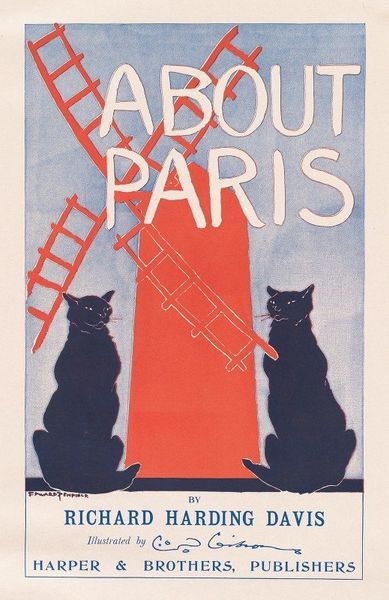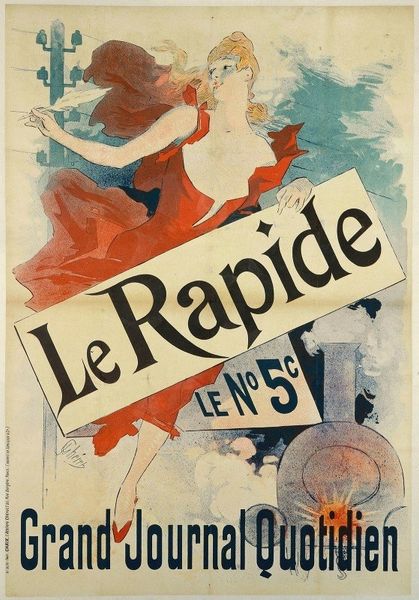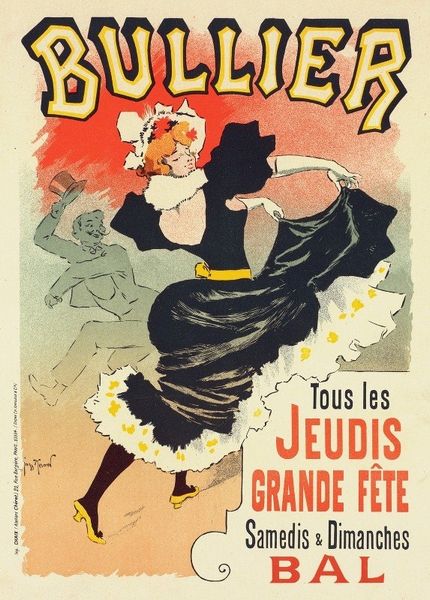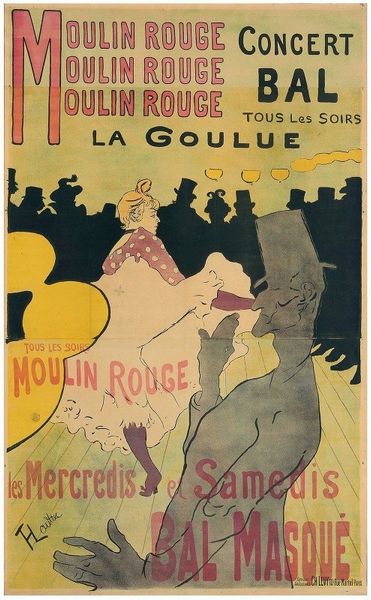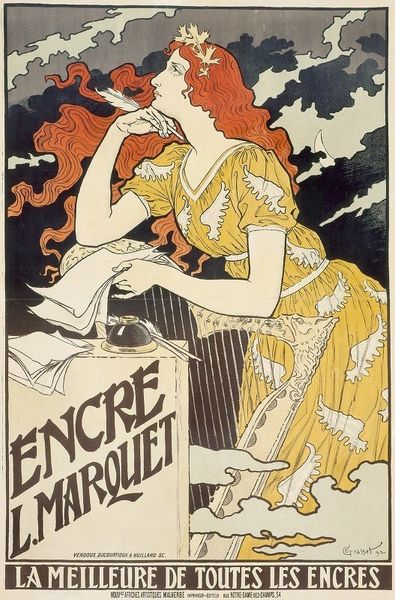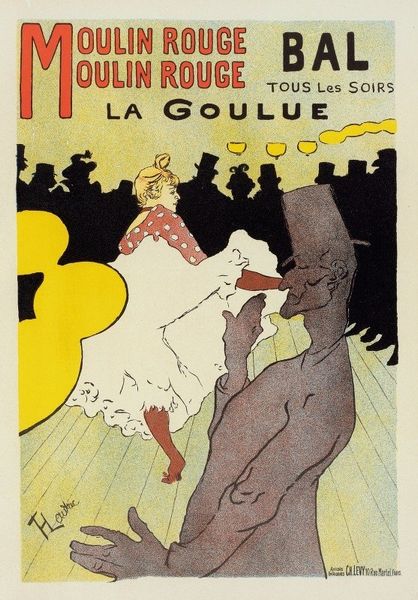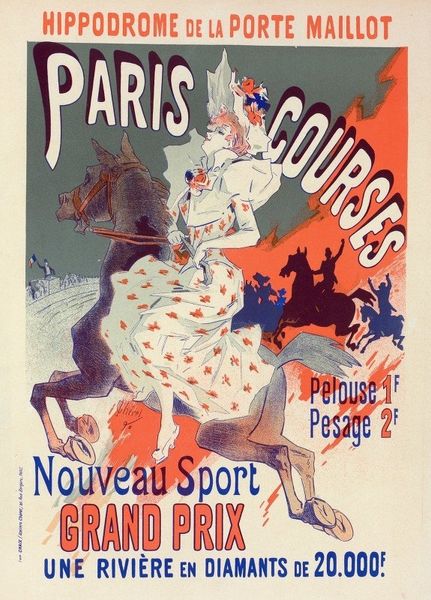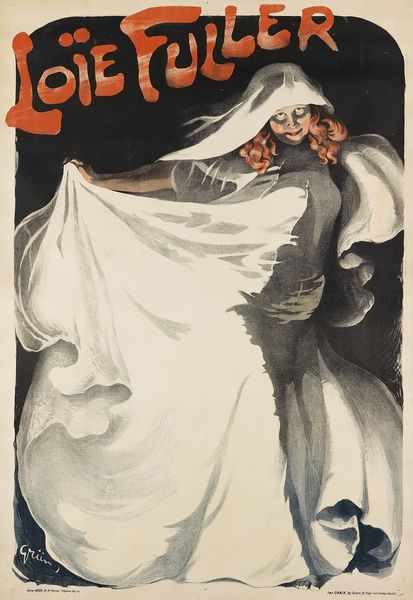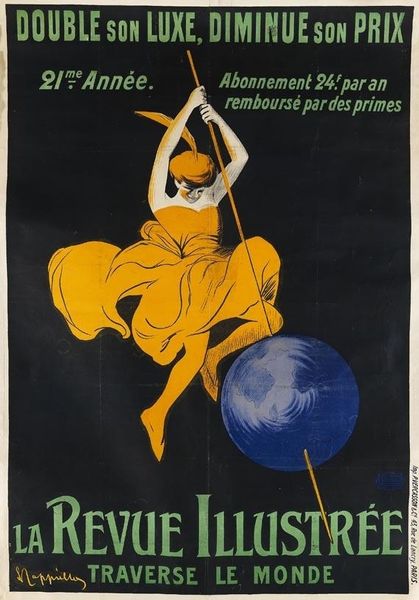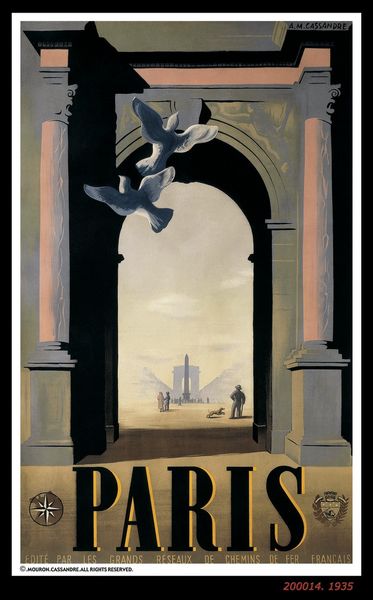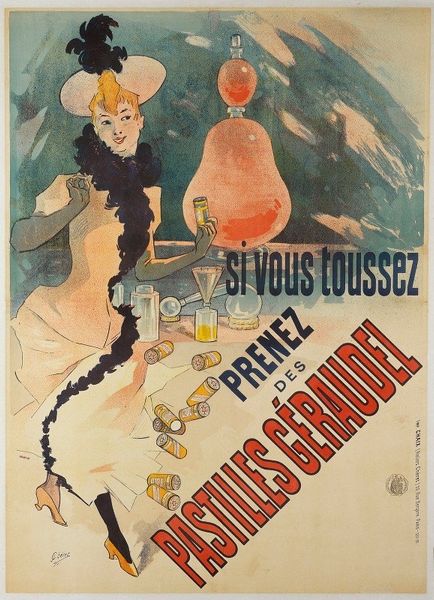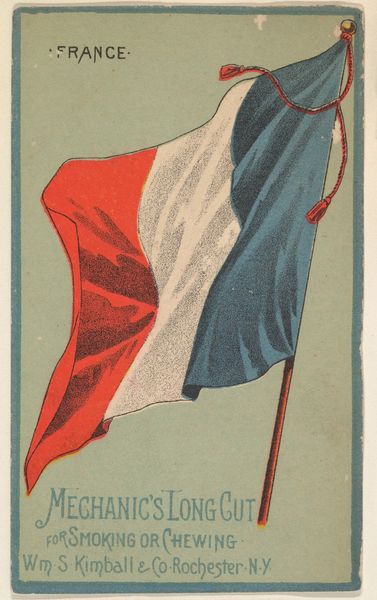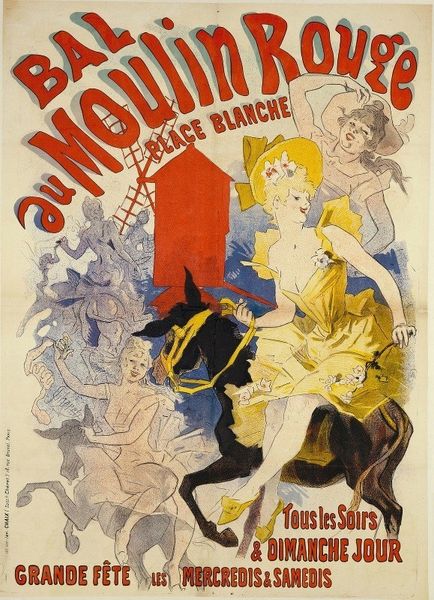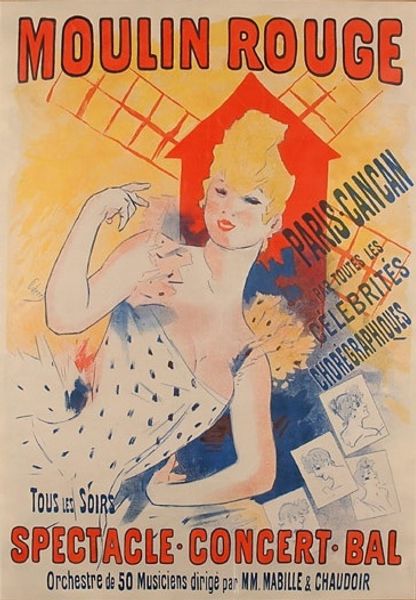
Copyright: Public Domain: Artvee
Editor: Here we have Jean d'Ylen's 1931 poster for *Paris-Nouvelles*, "Le grand quotidien de midi", it's printed as graphic art, I get a sense of urgency from the figure. There is such chaotic energy. How would you interpret this poster in its time period? Curator: Well, it's more than just a snapshot of frantic activity; it speaks volumes about the evolving role of news and its dissemination in the early 20th century. Consider the newspaper's slogan. To me, it emphasizes "Paris-Nouvelles'" dedication to offering midday updates in a period hungry for the latest information, like sport results or the stock market's results. Editor: So the poster itself is an advertisement reflecting the newspaper’s positioning in the market? Curator: Precisely. Notice the visual language: the courier's strained expression, the pile of papers she is holding, and how the artist employs the diagonal dynamic in this Pop-Art imagery, giving visual form to the immediacy and weight of the news itself. Now consider how the artist uses caricature…does that impact how people received the poster and, therefore, the newspaper? Editor: I see. The almost cartoonish depiction combined with what seems like real urgency kind of clashes…makes it stick in your mind. Almost propagandistic. Curator: Exactly. It's that tension between reality and hyperbole that really captures the changing relationship between media, the public, and socio-political climate of the era. Understanding the cultural and historical context allows us to dissect how "Paris-Nouvelles" sought to cultivate an image for itself in a competitive Parisian media environment. Editor: It’s a potent piece of advertising when you start considering it in this wider context. I thought it was just some running lady. Curator: It speaks volumes about the rise of mass media and how that medium portrayed itself to gain market share. Glad you got the full picture.
Comments
No comments
Be the first to comment and join the conversation on the ultimate creative platform.
